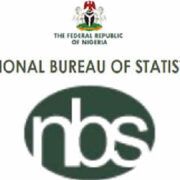Despite persistent efforts by governmental and non-governmental organizations and a national policy advocating for 35% affirmative action, women’s participation in Nigerian politics remains significantly low.
This is according to a paper presented by Mrs. Oloyede Oluyemi of the National Bureau of Statistics (NBS). shared by the UN Women Nigeria website. The report highlights a contrast between Nigeria’s progress and global, continental, and even sub-regional averages.
The paper, titled “Monitoring Participation of Women in Politics in Nigeria,” underscores that the national average of women’s political participation in Nigeria stands at a mere 6.7% in both elective and appointive positions. This figure pales in comparison to the global average of 22.5%, the African regional average of 23.4%, and the West African sub-regional average of 15%.
The study reveals that out of 36 recently confirmed ministerial appointments, only six are women, representing a meager 16.7%. In the National Assembly, women constitute 5.6% of the House of Representatives and 6.5% of Senators. Furthermore, despite fifteen years of uninterrupted democratic governance from 1999 to 2015, Nigeria has yet to produce a female governor in any of its 36 states.
The underrepresentation of women is deeply rooted in patriarchal practices prevalent in Nigerian society, dating back to the pre-colonial era. However, the re-introduction of democratic governance has seen a modest increase in women’s political participation.
Mrs. Oluyemi’s paper emphasizes the critical need for robust data in monitoring women’s political involvement. The National Center for Women Development, in collaboration with the National Bureau of Statistics, is currently collecting national data on women’s participation in politics from 1999 to 2015.
“Hopes are high that the result will show the progress steadily made to achieving the affirmative declaration and determine how the gap that erstwhile existed has been closed as well as measure the variation between where we are and the affirmative action of 35 percent,” the report states. “Also, it will improve evidence-based planning and programming involving women in decision making; increase the support of key stakeholders on measures to increase representation of women in decision-making and further improve awareness of new advocacy tools among stakeholders to support the campaign for increased representation of women in decision making in Nigeria.”
The report identifies several significant challenges hindering women’s political advancement, including:
- Patriarchy: A societal structure where men dominate, leading to women being viewed primarily as household figures rather than political actors.
- Stigmatization: The perception that politics is a corrupt arena, leading to women who venture into it being unfairly judged.
- Low Level of Education: A disparity in educational attainment, with fewer women qualified for political office.
- Meeting Schedules: Inconvenient timing of political meetings that conflict with women’s family responsibilities.
- Financing: The substantial financial requirements for contesting elections, which many women struggle to meet.
- Political Violence: The prevalence of violence during Nigerian elections, deterring female aspirants.
- Religious and Cultural Barriers: Interpretations of religious and cultural values that limit women’s public roles.
Despite these formidable obstacles, the report concludes with a note of optimism.
“Despite the challenges women are facing, women activism and advocacy, education of women, positivity on the part of successive governments towards women empowerment and interest of women to participate in politics is getting a lot of positive energy,” the paper concludes. “This is an indication that the participation of women in politics has a bright future.”
The paper recommends several actions to address the disparity, including creating support networks for aspiring female politicians, building mass coalitions of women’s support groups, establishing legal funds to challenge electoral malpractices, and introducing a quota system at all levels of government to ensure adherence to affirmative action goals.


